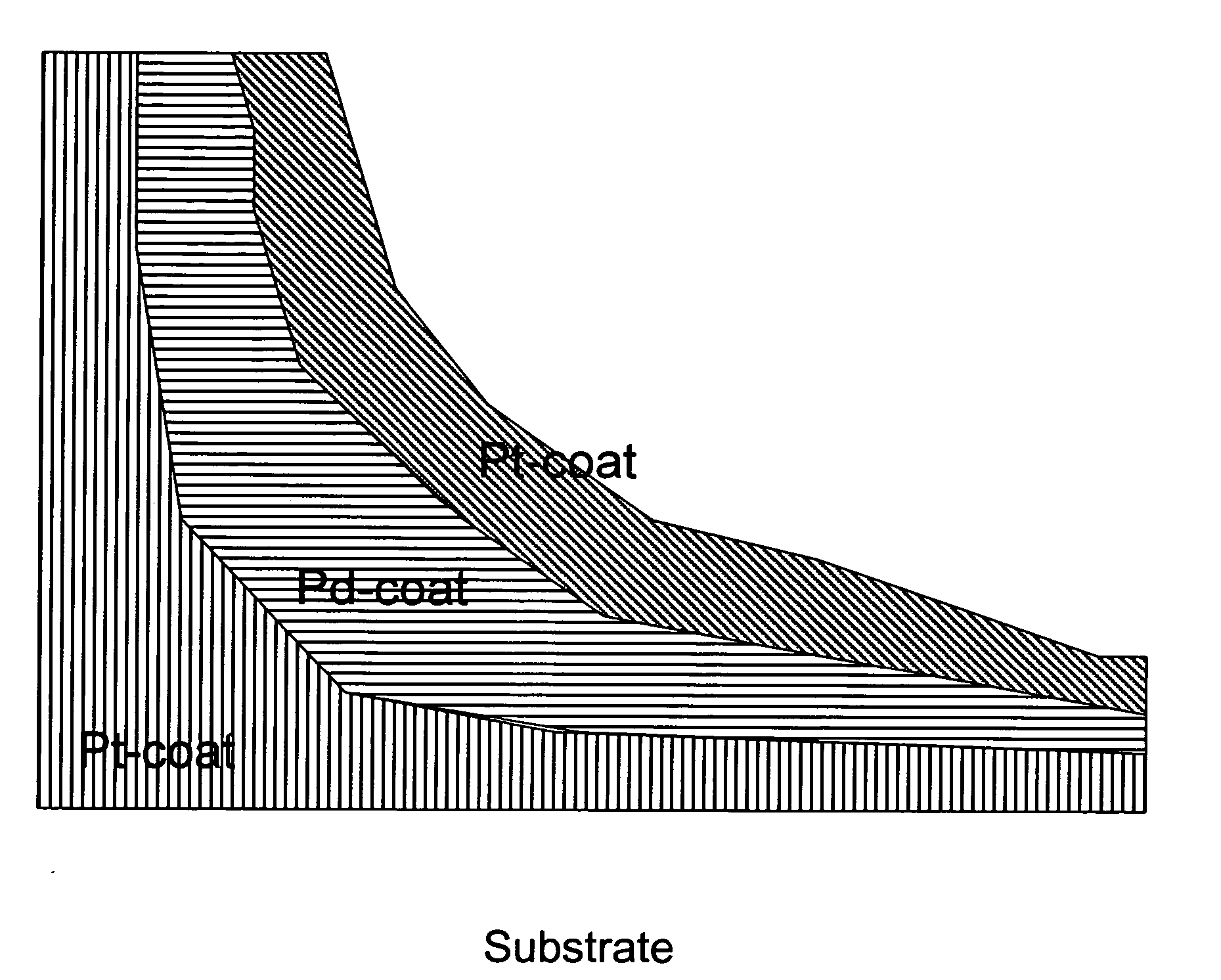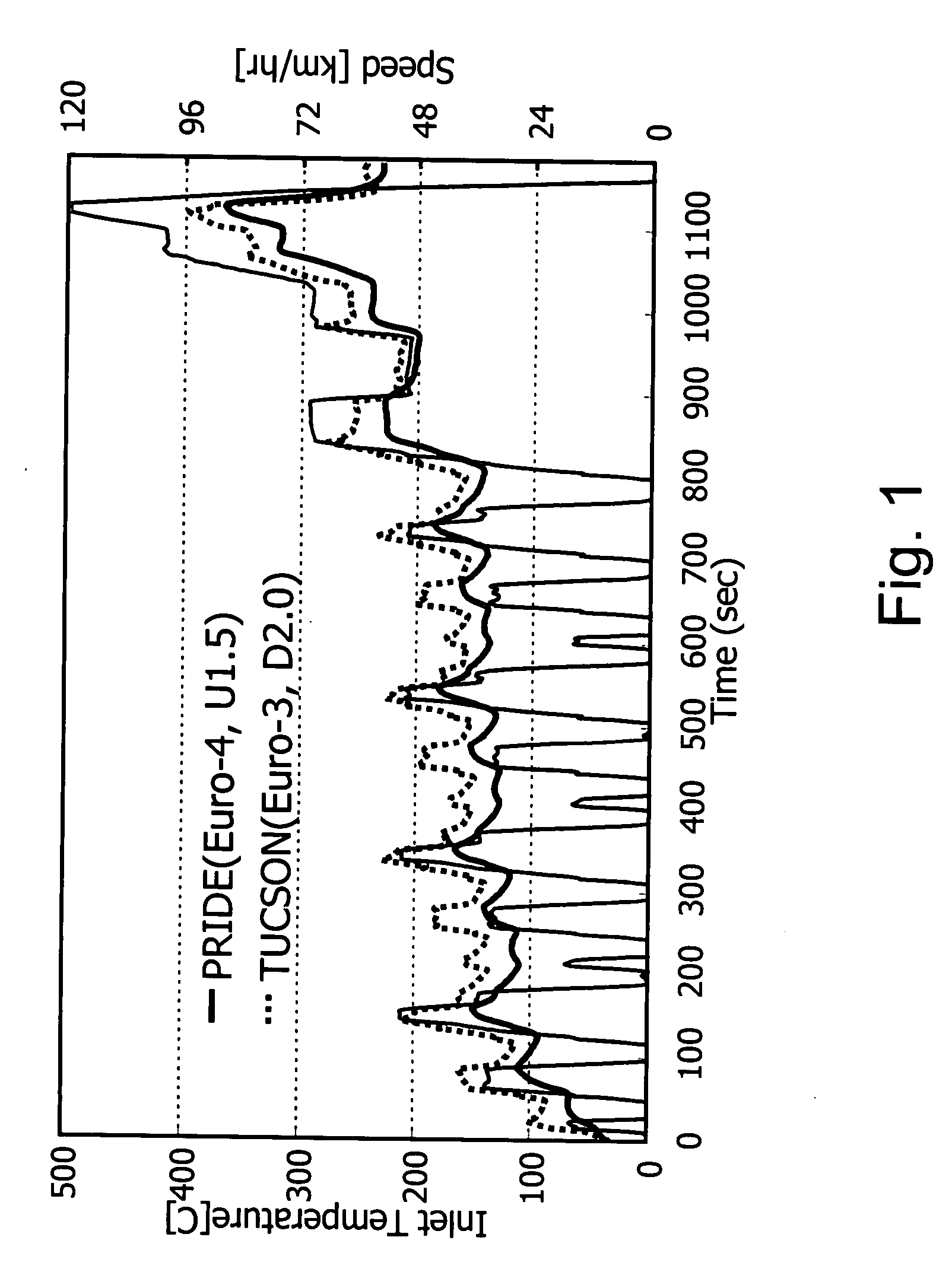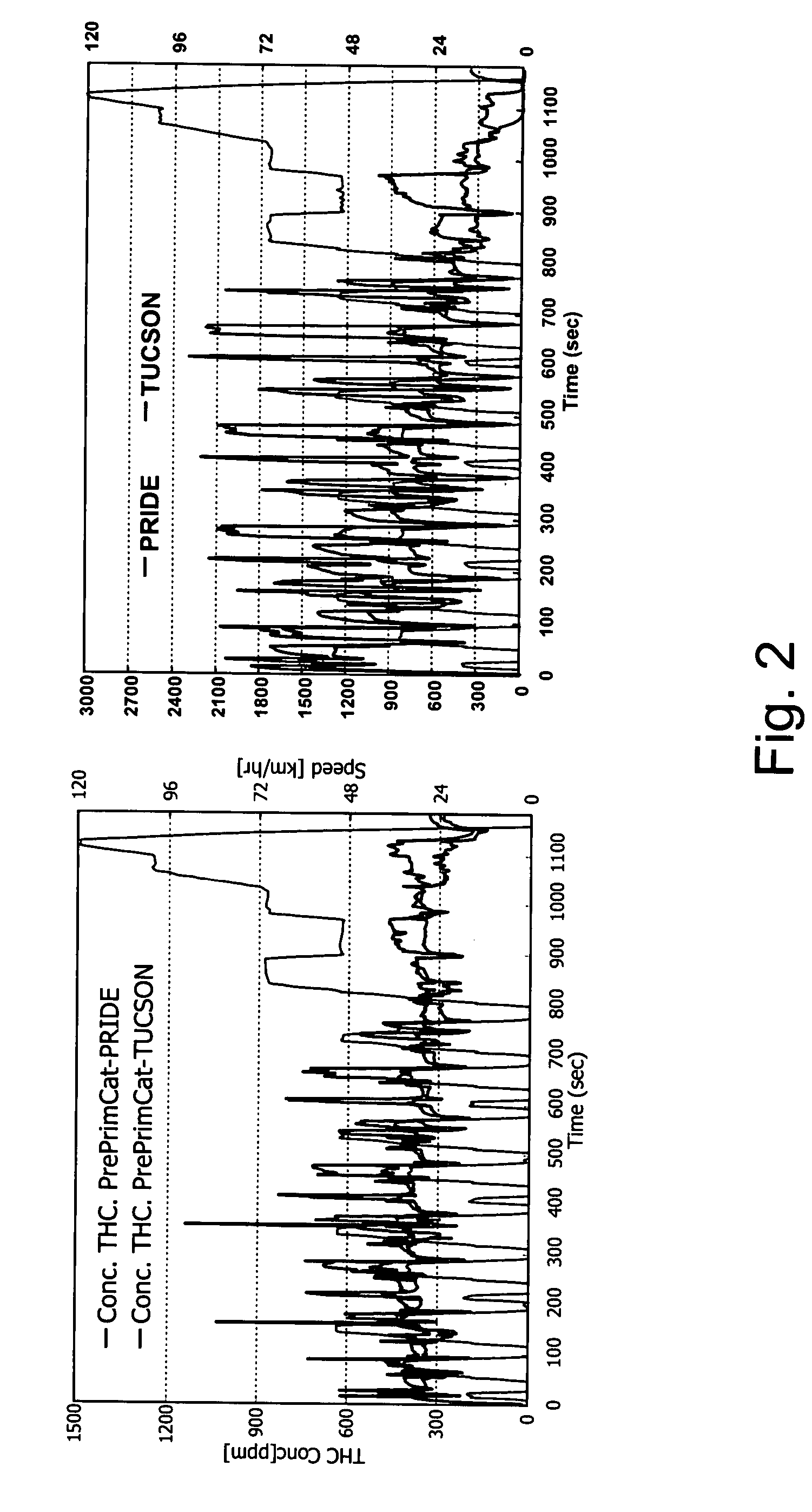Three-layered catalyst system for purifying exhaust gases of internal engines
a catalyst system and three-layered technology, applied in the direction of physical/chemical process catalysts, metal/metal-oxide/metal-hydroxide catalysts, separation processes, etc., can solve the problems of increasing the seriousness of the problem, excessive discharge of hydrocarbons, and the production of photochemical smog. to achieve the effect of improving the oxidation of hydrocarbons
- Summary
- Abstract
- Description
- Claims
- Application Information
AI Technical Summary
Benefits of technology
Problems solved by technology
Method used
Image
Examples
example 1
Manufacture of a Three-Layered Catalyst System Including a First Layer Containing 40% Platinum, a Second Layer Containing 100% Palladium, and a Third Layer Containing 60% Platinum
[0053] First Step: Preparation of First Layer (Lower Layer)
[0054] 1237 g of active alumina was dispersed in 1980 g of distilled water, and then put into an aqueous platinum solution. Subsequently, the mixed solution was stirred for 1 hour, 269 g of cerium-zirconium composite oxide, 119 g of acetic acid and 119 g of distilled water were added thereto, and the mixed solution was then stirred for 1 hour. Then, 923 g of octanol, which is an antifoaming agent for removing foam, was mixed into the mixed solution, and then the mixed solution was adjusted such that it had a pH of 4, to form a mixed slurry. Subsequently, the mixed slurry was milled to a size of 8 μm using a pulverizer, applied on a cordierite honeycomb having a cell density of 400 cells / inch, dried at a temperature of 120° C. for 3 hours, and then...
example 2
Manufacture of a Three-Layered Catalyst System Including a First Layer Containing 20% Platinum, a Second Layer Containing 100% Palladium, and a Third Layer Containing 80% Platinum
[0059] Each step of Example 2 was performed as in Example 1, except that the amount of platinum in the first and third layers was changed.
PUM
| Property | Measurement | Unit |
|---|---|---|
| size | aaaaa | aaaaa |
| temperature | aaaaa | aaaaa |
| pH | aaaaa | aaaaa |
Abstract
Description
Claims
Application Information
 Login to View More
Login to View More - R&D
- Intellectual Property
- Life Sciences
- Materials
- Tech Scout
- Unparalleled Data Quality
- Higher Quality Content
- 60% Fewer Hallucinations
Browse by: Latest US Patents, China's latest patents, Technical Efficacy Thesaurus, Application Domain, Technology Topic, Popular Technical Reports.
© 2025 PatSnap. All rights reserved.Legal|Privacy policy|Modern Slavery Act Transparency Statement|Sitemap|About US| Contact US: help@patsnap.com



